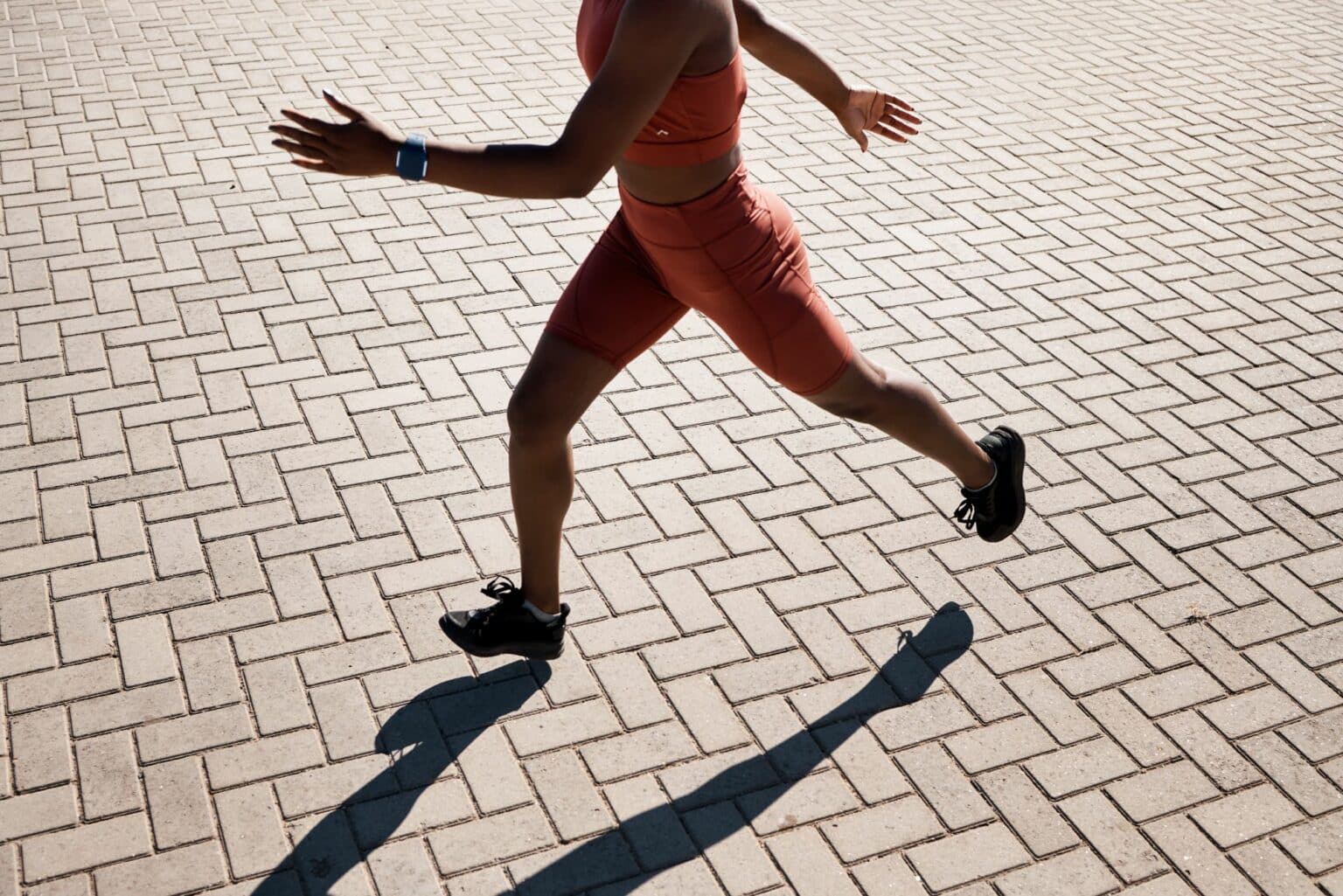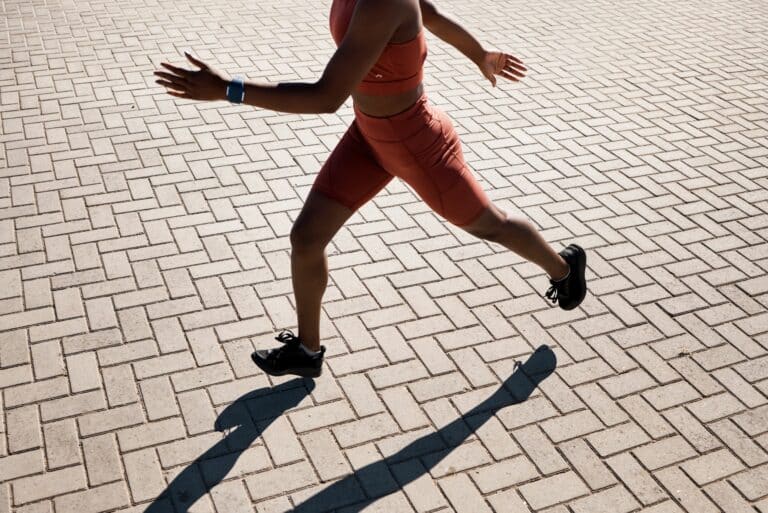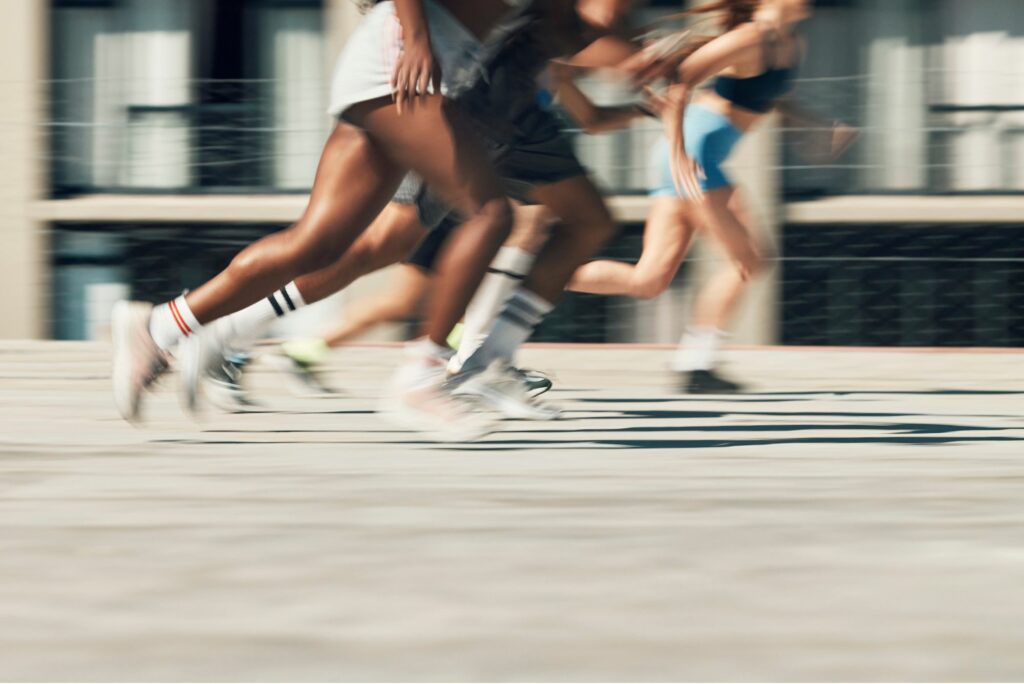


Running is one of the most common forms of exercise and physical activity. It requires little to no equipment, can be done almost anywhere, and is suitable for people of all ages and fitness levels. However, to accurately track your progress and distance covered while running, it is essential to know your average stride length and understand the factors that influence its average length.
Your stride length is the distance between two consecutive steps taken by the same leg. Typically measured in feet or metres, it varies among individuals based on factors such as height, weight, age, and fitness level. In this guide, we will discuss how you can determine your average stride length step-by-step.
Before we dive into the steps, it is crucial to understand the concept of stride length in more detail. Stride length is not a fixed measurement and can vary during different activities, such as walking, jogging, or sprinting. It also changes based on your pace and terrain.
Stride length is the distance covered when taking two steps, one with each foot, and is measured from the starting position to the ending position. It is essential to note that strides are counted per leg, meaning if you take 10 steps with each leg while running, your total number of strides for that run will be 20.
This distinction is crucial in accurately calculating your average stride length. The average person’s walking stride length is approximately 5 feet (60 inches), resulting in an average step length of approximately 2.5 feet (30 inches). Stride length can be affected by various factors, including height, age, sex, and physical fitness level. Understanding your stride length is essential for accurate distance tracking and fitness monitoring.
There are a few different ways to measure your stride length, but the most accurate method is by using an indoor or outdoor track. If you do not have access to a track, you can also use a treadmill or mark out a distance on a flat and straight trail.
Repeat these steps a few times and take an average of your results to get a more accurate measurement of your stride length. It is recommended to measure your stride length on various surfaces, such as grass, pavement, or treadmill, to account for any differences in terrain or incline.

Another method for determining your average stride length is by using your height. This method can provide a rough estimate of your stride length and may not be as accurate as actually measuring it.
For example, if you are 5 feet tall (60 inches), your estimated average stride length would be 24.78 inches or approximately 2 feet.
As your pace increases, your stride length will also increase, and you’ll cover the distance in less time. Use a stride length calculator to calculate your calculated stride length based on your height and sex.
Consider partnering with a running coach to calculate and refine your stride length, allowing you to develop a tailored training plan. Our Run Your Best Race programme led by our head coach and London Marathon winner Mike Gratton, offers this valuable service. Consider exploring it further and arrange an introductory video call today.
| Gender | Height (Feet – Inches) | Height (Inches) | Stride Length (Feet) | Stride Length (Inches) |
|---|---|---|---|---|
| Male | 5’0″ | 60 | 2.07 | 24.78 |
| Male | 5’2″ | 62 | 2.13 | 25.61 |
| Male | 5’4″ | 64 | 2.20 | 26.43 |
| Male | 5’6″ | 66 | 2.27 | 27.26 |
| Male | 5’8″ | 68 | 2.34 | 28.10 |
| Male | 5’10” | 70 | 2.41 | 28.91 |
| Male | 6’0″ | 72 | 2.48 | 29.74 |
| Male | 6’2″ | 74 | 2.54 | 30.58 |
| Male | 6’4″ | 76 | 2.61 | 31.41 |
| Male | 6’6″ | 78 | 2.68 | 32.23 |
| Female | 4’10” | 58 | 1.99 | 23.95 |
| Female | 5’0″ | 60 | 2.07 | 24.78 |
| Female | 5’2″ | 62 | 2.13 | 25.61 |
| Female | 5’4″ | 64 | 2.20 | 26.43 |
| Female | 5’6″ | 66 | 2.27 | 27.26 |
| Female | 5’8″ | 68 | 2.34 | 28.10 |
| Female | 5’10” | 70 | 2.41 | 28.91 |
| Female | 6’0″ | 72 | 2.48 | 29.74 |
The stride lengths are estimated using the formula (stride length = height in inches × 0.413). This provides an approximate guide to average stride length based on height.
Your average running stride length, or stride length running, can be influenced by various factors, including:
Understanding these factors can help you track your progress and make necessary adjustments to improve your running performance. By regularly measuring your stride length, you can also monitor any changes that may occur in terms of pace, fitness level, or terrain.
To ensure accurate measurement of your stride length, follow these tips:
By following these tips, you can ensure accurate measurement of your stride length and gain a better understanding of your walking or running performance. Accurate stride length data can help you set realistic goals, track your progress, and optimise your training routine.
After determining your average stride length, you can update the settings on your running device or app to ensure accurate distance tracking. Most devices and apps allow you to input your stride length measurement manually, which will improve the accuracy of your distance and pace calculations. Smartphones have built-in accelerometer chips and health apps that record a step count, allowing you to track your average stride length and number of steps.
If your device does not have this option, you may need to adjust the default stride length setting based on your height and sex. This method may not be as accurate as manually measuring and inputting your stride length, but it is still a better option than using the default setting.
By understanding and tracking your average stride length while running, you can enhance your training routine and reach your fitness goals more effectively.

There are some common mistakes that people make when trying to measure stride length. These include:
By avoiding these common mistakes, you can ensure a more accurate measurement of your stride length and improve your running performance.
According to studies, the average stride length for men is 2.9 feet (35 inches) and for women is 2.3 feet (27 inches). Many fitness trackers and watches use a default average step length of 2.2 feet (0.67 metres) for women and 2.5 feet (0.762 metres) for men.
It’s important to note that these statistics are just an average and should not be used as a benchmark for your own performance. Individual differences such as height and fitness level can significantly affect a person’s average stride length. Everyone’s body is different, so it’s essential to focus on improving your own stride length rather than comparing yourself to others.
Knowing your average stride length can be beneficial in various ways, such as:
With the right tools and knowledge, you can use your average stride length data to enhance your running experience and reach your fitness goals.
If you’re looking to improve your stride length and overall running performance, consider joining our Run Your Best Race programme. Led by our experienced head coach and London Marathon winner, Mike Gratton, this programme offers personalised coaching services tailored to your specific needs and goals.
Through this programme, you’ll have access to one-on-one coaching sessions, video analysis of your running form, and detailed training plans designed to help you achieve your best race results yet. With the added benefit of measuring and tracking your stride length and step length average, you can work with our team to continually improve and become a better runner.
Don’t hesitate to join our Run Your Best Race programme and take your running to the next level.
In conclusion, understanding your average stride length is a crucial aspect of tracking and improving your running performance. By measuring and tracking this data, you can make necessary adjustments to your training routine and reach your fitness goals more effectively.
Consider joining our Run Your Best Race programme for personalised coaching services to enhance your running experience and become a better runner. Sign up today and take the first step towards becoming a better runner!
Overall, remember that every individual’s body is unique, so focus on improving your own stride length rather than comparing yourself to others. Keep striving towards progress and continue pushing yourself to run further and faster with each step! Happy running!
Join our mailing list to stay up to date with the latest UK running events, training tips, and exclusive offers on running products. Rest assured, we value your privacy and would never dream of selling your address. Sign up now…
Share this article
Introduction: the unwelcome bonk We’ve all experienced it at some point – that dreaded sudden...
Can you start running at 50? Absolutely, and safely too. In this guide, we’ll explain...
Completing a marathon in under four hours is a remarkable achievement for countless runners. It...
Elevation gain refers to the total cumulative vertical distance ascended during a sport activity, such...
A heart rate zone calculator for runners is vital for optimising your training intensity. It...
Running a 5k (3.1 miles) is a popular goal for many runners, whether they are...
We’re here to make sure you’re up-to-date with the latest running tips, events and product discounts – we’ve always got your back! Rest assured, we value your privacy and would never dream of selling your address.
BONUS: Sign up today and receive a FREE code for our Sub-4-Hour Marathon Plan